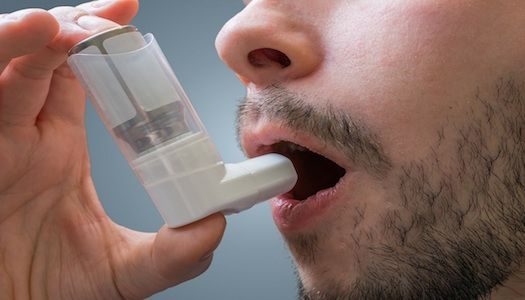Article
Asthma More Common in Opioid Dependent Patients, Especially Women
Author(s):
Investigators found that the prevalence of asthma in patients with opioid dependence was more than double the national prevalence.

Investigators have found that the prevalence of asthma among opioid dependent patients is much higher than its prevalence in the general US population. They also found that women with opioid dependence may be disproportionately affected by asthma compared to men with the condition.
Albert Lee, MD, Roshni Naik, MD, and Rauno Joks, MD, of the Center for Allergy and Asthma Research at SUNY Downstate Medical Center, Brooklyn, NY, found that the prevalence of asthma among patients with opioid dependence was more than double the national rate.
Among 1966 patients with opioid dependence, 338 patients—or 17.2%—had a diagnosis of asthma. For comparison, the team used the national prevalence of asthma of 8.3% in 2016, according to the US Centers for Disease Control and Prevention (CDC).
“While some studies have shown that opioid medication can help with cough and shortness of breath in heart disease and advanced chronic obstructive pulmonary disease, other studies have shown that opioids such as heroin worsen asthma,” said Naik in a statement. “We hypothesized that there is higher prevalence of asthma among patients with opioid dependence who are addicted or dependent on prescription pain killers or heroin.”
Niak added that morphine and other opioid drugs cause the release of histamine mast cells in the body, which contributes to allergic reactions and the symptoms of itching, hives, and swelling. Niak and colleagues had hypothesized that opioid use would be linked to asthma due to the allergic nature of asthma.
The research, which was presented at the 2019 Annual Meeting of the American Academy of Allergy, Asthma & Immunology (AAAAI), used data (ICD 9 and ICD 10) from patients with opioid dependence who received acute care at the Kings County Hospital Center in New York City from 2013 to 2017. Patient age ranged from 18 to 79 years.
In addition to the overall prevalence, the research team stratified the results by gender. They found that the prevalence of asthma among women with opioid dependence was 25%, compared to 13.9% for men. That difference is greater than the difference in the general population, where the prevalence of asthma is greater among women than men (9.7% versus 6.9%, respectively), though not at the same proportion.
Naik noted that no guideline currently exists to direct clinicians on how to manage asthma in patients with opioid dependence or who are taking opioid medications.
“However, patients with severe asthma should follow up regularly with their primary care doctor or see an asthma specialist to maintain control of their asthma,” said Naik. “Patients who are addicted to opioids should seek a healthcare provider in combating their addiction.”
The abstract, “Prevalence of Asthma in Chronic Opioid Users Receiving Acute Care in an Inner City, Municipal New York Hospital,” was presented at the Annual Meeting of AAAAI on Saturday, February 23, 2019.




